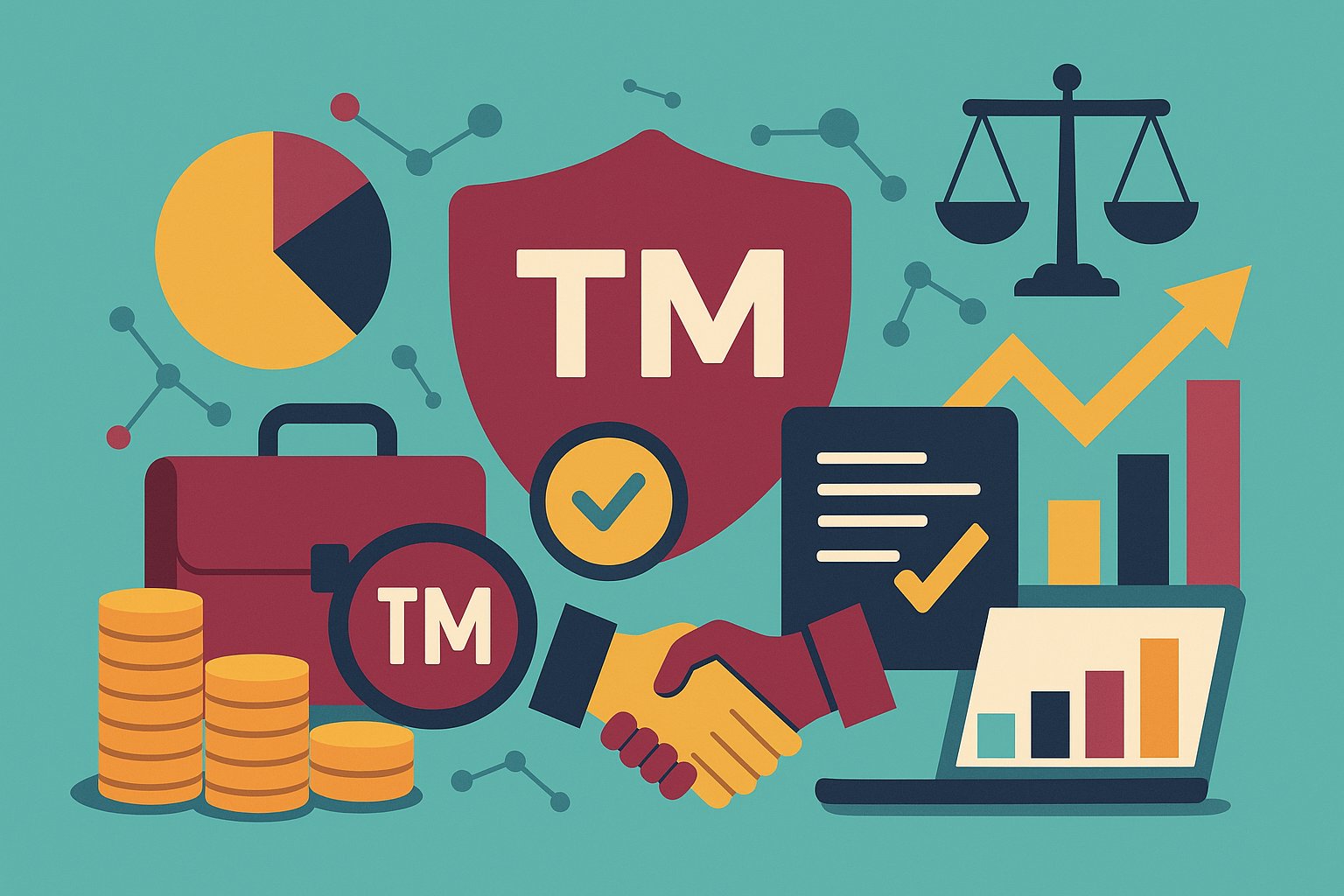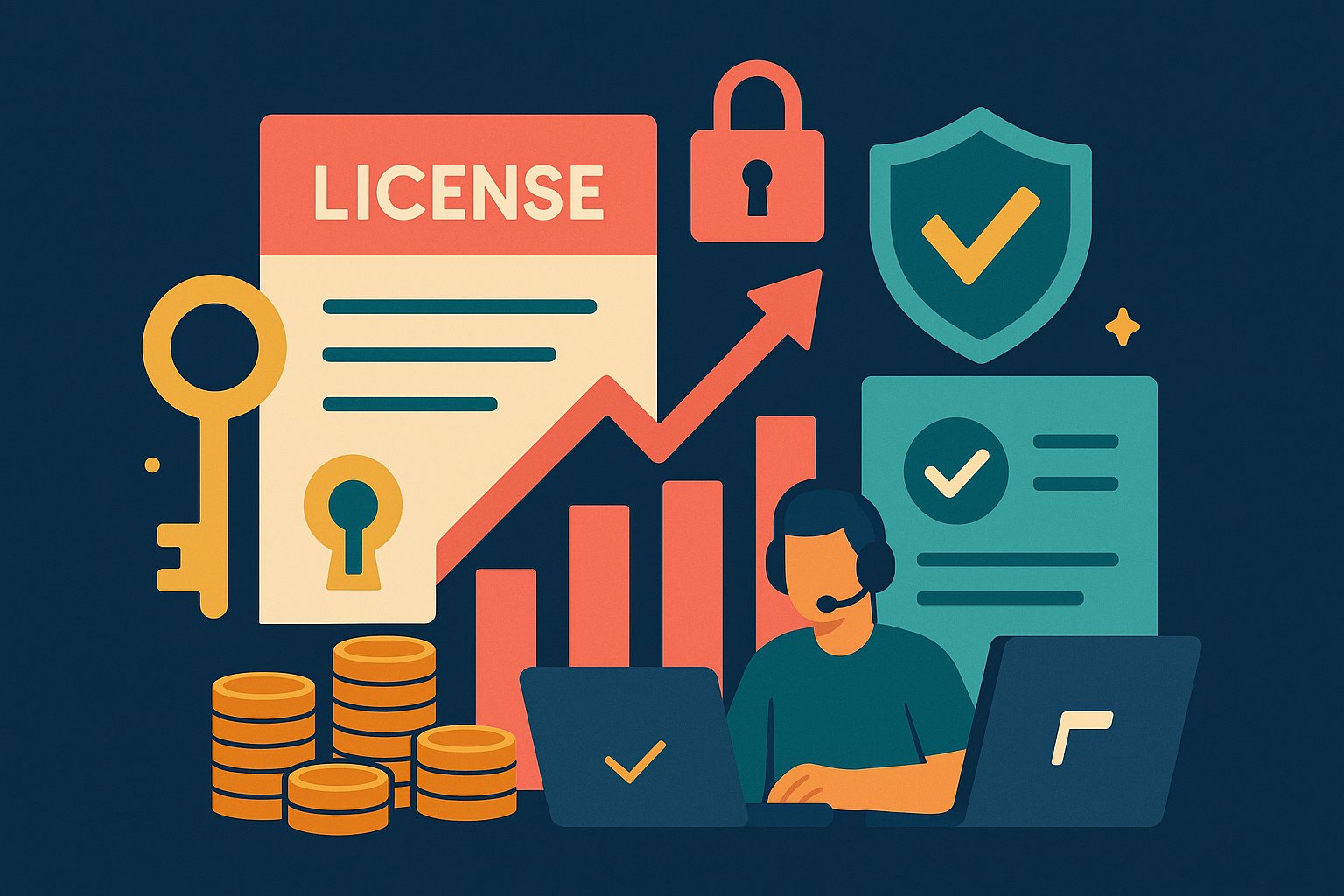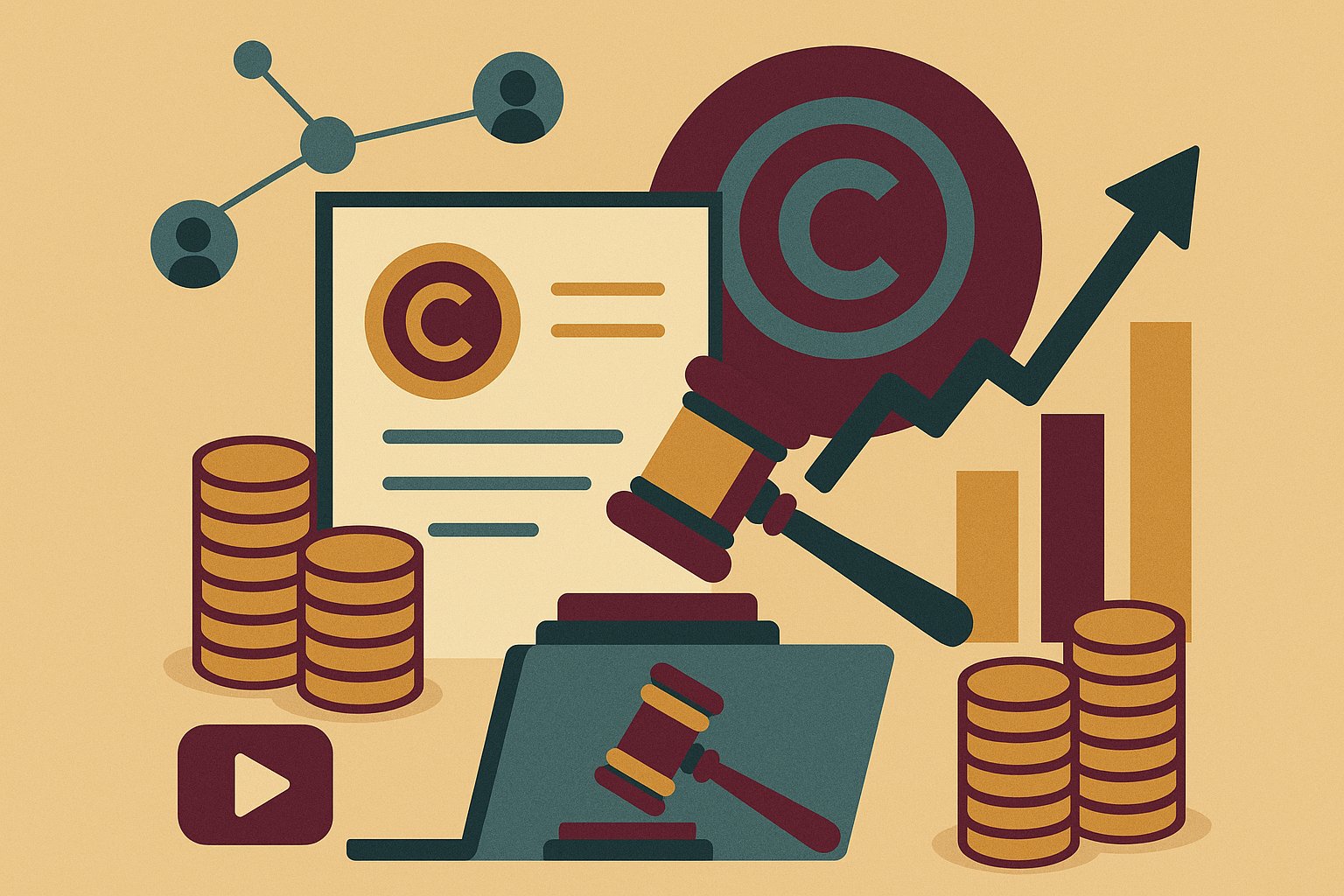Navigating the Essence of Copyright Assignments
In today’s digital landscape, copyright assignments have evolved far beyond simple transfers of ownership. When creators and businesses negotiate revenue share deals, the assignment of copyright becomes a strategic lever to unlock value, incentivize collaboration, and distribute rewards fairly. Unlike licenses, which merely grant permission to use a work, copyright assignments transfer the underlying legal title—or a portion of it—from the author to another party. This transfer can be absolute or limited in scope, geography, or duration, and it lays the foundation for sophisticated revenue sharing arrangements. Understanding the nuances of assignment versus licensing is the first step toward structuring agreements that balance control, flexibility, and profit potential.
Demystifying Revenue Share Deals
Revenue share deals have surged in popularity as digital platforms empower creators to monetize content directly. These arrangements typically allocate a percentage of net revenues—whether from sales, streaming, advertising, or other exploitation—to the rights holder. In revenue share models that incorporate copyright assignments, stakeholders may divide ownership interests rather than simply grant usage rights. This ownership split determines how royalties, licensing fees, and derivative earnings are distributed over time. By blending partial assignments with revenue share percentages, parties align incentives: creators gain upfront capital or marketing support, while companies secure a share in long-term upside. Clarity around definitions—net revenue, gross revenue, allowable deductions—ensures trust and minimizes post-deal disputes.
Why Partial Assignments Are Game-Changers
A partial copyright assignment enables creators to cede specific rights—such as reproduction or public performance—in exchange for a share of future earnings, while retaining moral rights and other prerogatives. This modular approach empowers creators to collaborate with multiple partners across different channels without giving up full control of their work. For instance, an author might assign digital distribution rights to one platform and print rights to another, each tied to distinct revenue share arrangements. Partial assignments also facilitate joint ventures: co-creators can each hold defined percentages of ownership, streamlining profit splits when the work generates income. Carefully delineated assignment segments thus serve as building blocks for flexible, multilayered monetization strategies.
Crafting the Assignment Agreement Blueprint
Central to any assignment is a well-drafted agreement that leaves no ambiguity about transferred rights. Key elements include a precise description of the work, the scope of rights assigned, geographic coverage, term length, and any reserved rights retained by the assignor. Incorporating revenue share mechanics directly into the assignment clause—by specifying payment schedules, reporting intervals, and audit rights—prevents the need for separate royalty agreements. It’s essential to define “assignment” versus “license” terminology consistently, ensuring that the document reflects the parties’ true intentions. Equally important are clauses addressing moral rights, reversion triggers in case of non-exploitation, and conditions under which the assignor can reclaim rights, thereby safeguarding creators from perpetual loss of control.
Valuing Your Copyright for Fair Share Splits
Assigning a percentage of copyright ownership demands a robust valuation of the underlying work. Valuation methods vary—from cost-based models that sum creation expenses to income-based approaches projecting discounted future cash flows. Market comparables can offer additional context, examining similar transactions in publishing, music, or software. Accurate valuation informs the revenue share split: a creator assigning 30% of copyright for marketing support expects commensurate future payments. It’s crucial to agree on valuation assumptions—growth rates, royalty percentages, discount rates—during negotiations, and to document them transparently. Engaging third-party valuation experts can lend credibility, especially when valuable IP assets command significant advance payments or complex milestone payments.
Strategizing Negotiations Between Creators and Corporates
Effective negotiations hinge on understanding each side’s priorities. Creators seek fair compensation, control over artistic integrity, and reversion rights if projects stall. Companies pursuing distribution or development want security of rights and predictable revenue flows. To bridge these interests, negotiators can employ integrative bargaining: proposing trade-offs that expand overall value. For example, a higher revenue share might be paired with narrower exclusivity, or a longer assignment term might justify performance-based escalators. Demonstrating how shared success benefits both parties—such as leveraging corporate marketing channels to boost creator brand recognition—fosters a collaborative atmosphere. Documenting verbal concessions promptly in memos of understanding prevents misunderstandings and anchors subsequent drafting.
Safeguarding Moral Rights and Creative Integrity
Even when assigning economic rights, creators often wish to preserve moral rights—the entitlement to attribution and protection against derogatory treatment. While moral rights are inalienable in certain jurisdictions, agreement language can reinforce these protections globally. Clauses may stipulate attribution standards, approval rights over significant edits, and insist on weave-in-of-credit acknowledgments in derivative works. By integrating moral rights provisions into assignment documents, creators ensure their work remains associated with their name and artistic vision, even as ownership percentages shift. Upholding creative integrity through contractual guarantees not only secures personal fulfillment but can also enhance audience trust and brand value over time.
Defining Reversion and Reacquisition Conditions
Long-term revenue share deals risk stagnation if assigned rights go unused. To prevent this, agreements often include reversion triggers: clauses that automatically revert copyright segments back to the creator upon conditions such as a period of non-exploitation, failure to meet marketing milestones, or insolvency of the assignee. Defining clear thresholds—six months without a release, missing two consecutive quarterly revenue targets—provides objective criteria for reversion. Reacquisition terms may also outline buyback mechanisms, allowing creators to repurchase assigned rights at predetermined rates. By embedding reversion and reacquisition pathways, creators retain an escape hatch, ensuring that dormant IP can pursue fresh opportunities elsewhere.
Structuring Reporting and Audit Mechanisms
Transparency is the bedrock of any revenue share arrangement. Copyright assignment agreements should mandate periodic reporting—monthly, quarterly, or annually—detailing revenue sources, unit sales, streaming counts, advertising impressions, or licensing deals. Coupled with audit rights that permit independent verification of accounting records, these provisions discourage underreporting and build mutual confidence. Effective audit clauses specify notice periods, auditor qualifications, cost allocations for audits, and remedies for discovered discrepancies. By weaving these obligations into the assignment document, parties eliminate the need for parallel royalty agreements and centralize governance of economic rights and obligations in a single cohesive contract.
Navigating Tax Implications and Compliance
Copyright assignments often trigger tax events for both assignor and assignee. Upfront assignment payments may be treated as capital gains or ordinary income, depending on the creator’s status and jurisdictional rules. Ongoing revenue shares could be subject to withholding taxes on cross-border payments, VAT on digital services, or income tax on royalties. Assignor and assignee should engage tax professionals early to structure payments—gross versus net, inclusive of tax withholdings—and to leverage treaty benefits that reduce double taxation. Compliance clauses in the agreement should require parties to cooperate on tax reporting, share relevant documentation, and indemnify each other for taxes arising from misclassification or non-compliance.
Addressing Global Distribution Challenges
A strategic copyright assignment might grant rights in multiple territories, each with distinct legal frameworks. Differences in copyright term lengths, moral rights protection, and enforcement mechanisms necessitate tailored approach for each region. Agreements should map territory-specific rights clearly, referencing applicable laws and specifying local counsel responsibilities. When assigning rights for digital distribution, clarifying how geo-blocking, language adaptations, and local consumer protection statutes operate is essential. Termination and reversion triggers may also vary by jurisdiction; what constitutes non-exploitation in one country may differ in another. By thoroughly charting geographic considerations, creators and companies minimize legal surprises and optimize territorial monetization.
Protecting Against Infringement and Third-Party Claims
Assigning copyright without adequate indemnities can expose creators and assignees to costly infringement suits. Assignment agreements must include robust indemnification clauses: the assignor warrants clear title and non-infringement, while the assignee agrees to defend and indemnify against third-party claims arising from post-assignment modifications or unauthorized uses. Cap provisions, deductible amounts, and mutual indemnities help balance risk. Specifying procedures for notifying the other party of claims, selecting defense counsel, and sharing litigation costs fosters efficient resolution. By embedding comprehensive infringement protections, both sides safeguard their investments and maintain business continuity if disputes arise.
Managing Future Derivative Works and Enhancements
Derivative works—translations, adaptations, remixes, or sequels—often generate substantial additional revenues. Assignment agreements should anticipate these evolutions, specifying who owns improvements or extensions. A creator may reserve exclusive rights to author sequels, while granting the assignee first negotiation for derivative licenses. Alternatively, joint ownership or co-creation clauses allocate ownership percentages for collective enhancements, accompanied by shared revenue splits. Defining approval and creative control procedures prevents conflicts over artistic direction. By proactively addressing derivative works, agreements ensure that the value of original and subsequent creations flows equitably to all stakeholders, fostering continued innovation and collaboration.
Leveraging Smart Contracts to Automate Revenue Distribution
Blockchain technology and smart contracts are transforming how copyright assignments are executed and revenue is shared. By encoding assignment terms—ownership percentages, payment triggers, reversion conditions—into blockchain-based smart contracts, parties can automate royalty calculations and disbursements in near real time. This approach enhances transparency, reduces administrative overhead, and minimizes disputes over accounting. Smart contracts can also enforce reversion triggers automatically if sales thresholds aren’t met, instantly restoring rights to creators. While still emerging, this technology holds promise for revolutionizing copyright assignments by combining legal certainty with operational efficiency.
Lessons from Landmark Deals in Media and Technology
The merger of creativity and commerce has produced iconic revenue share arrangements. Consider the video game industry, where indie developers often assign partial copyrights to publishers in exchange for marketing muscle, up-front advances, and shared revenues. Studios such as Epic Games and Valve set benchmarks by structuring deals that align promotional spend with revenue share escalators, ensuring developers benefit as games surpass sales milestones. In the music sector, streaming platforms negotiate partial assignments of digital performance rights to labels and artists, embedding complex royalty tiers and audit clauses. These landmark deals underscore the transformative power of well-structured copyright assignments in fueling blockbuster successes and sustaining creative ecosystems.
Common Pitfalls and How to Sidestep Them
Even seasoned negotiators can stumble when assigning copyrights in revenue share deals. Vague grant language may inadvertently strip creators of key rights, while poorly defined revenue definitions invite interpretation wars. Overlooking jurisdictional moral rights protections can lead to unenforceable clauses. Neglecting reversion triggers risks indefinite loss of dormant IP, and bypassing tax planning can trigger unexpected liabilities. To avoid these traps, engage multidisciplinary teams—legal, tax, accounting, and technical experts—early in the deal process. Use clear, consistent terminology, and test your draft agreement against hypothetical scenarios to ensure it holds up under real-world conditions.
Embracing Future Trends in Copyright Assignments
Looking ahead, copyright assignments will continue to evolve alongside emerging technologies and business models. Artificial intelligence may prompt new clauses addressing training data usage and AI-generated derivative works. The rise of web3 platforms could shift deal structures toward tokenized ownership and micro-payments. Global efforts to harmonize copyright law, such as updates to the Berne Convention or digital single market initiatives, will influence assignment terms and enforcement protocols. Creators and companies that stay abreast of these shifts—by attending industry forums, monitoring legislative developments, and experimenting with innovative contract tools—will maintain competitive advantage in rapidly changing markets.
Empowering Creators Through Knowledge and Strategy
At its heart, understanding copyright assignments in revenue share deals is about empowering creators to monetize their ingenuity without sacrificing control or integrity. Well-crafted assignment agreements blend legal precision, financial insight, and strategic foresight to forge partnerships that reward all participants. By mastering valuation, negotiation tactics, reporting protocols, and global compliance, creators can harness the full earning potential of their works. As digital ecosystems expand and revenue streams diversify, the ability to assign and manage copyrights with confidence becomes a core competency for sustainable creative success.
Final Reflections: Turning Assignments into Alliances
The dance of assigning copyright is more than a legal formality; it’s an alliance-building exercise that aligns incentives, shares risks, and harmonizes visions. When thoughtfully structured, assignment agreements can catalyze marketing campaigns, power distribution networks, and unlock innovation at scale. Remember that every clause is an opportunity: to clarify expectations, protect moral rights, automate payments, and chart reversion pathways. Armed with a deep understanding of copyright assignments and revenue share dynamics, creators and businesses can craft win-win deals that propel both artistic expression and commercial prosperity well into the future.




